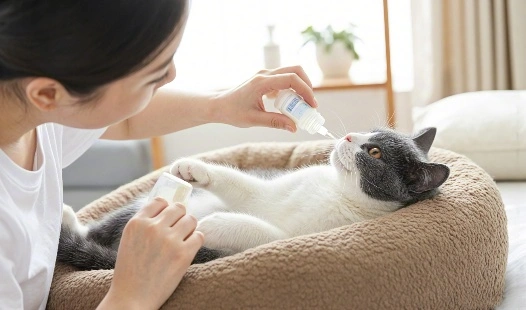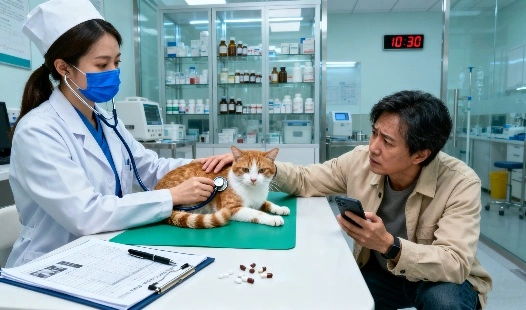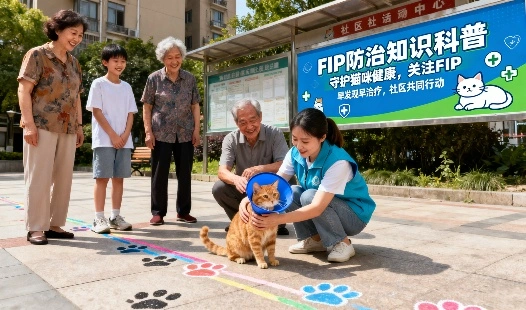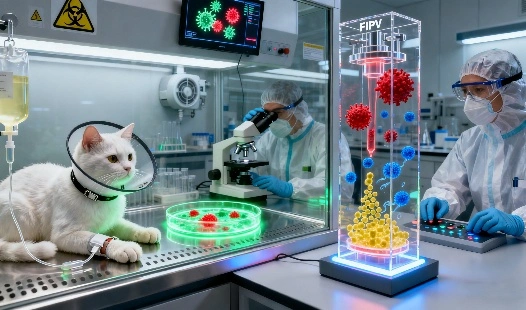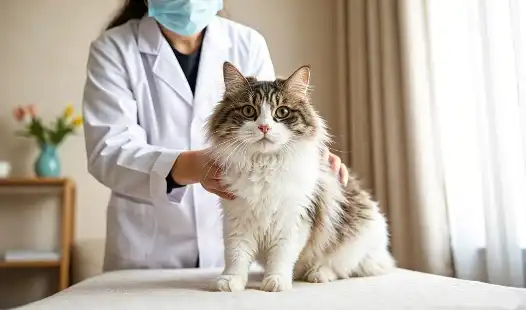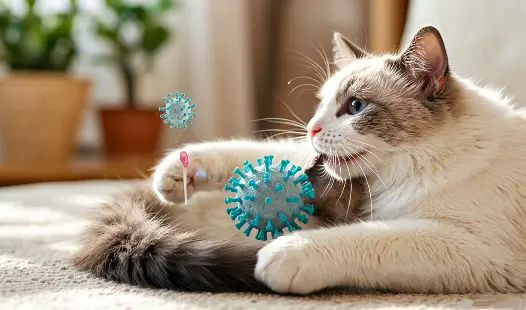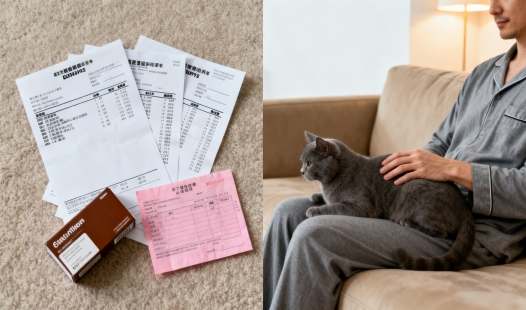Our feline pals might be affected by the difficult ailment known as Feline Infectious Peritonitis (FIP). As a cat owner, it is essential to educate yourself about the FIP treatment procedure and how to best assist your pet during this difficult time. In order to assist achieve the best possible result during FIP treatment and recovery, this article will provide practical advice on caring for a cat with FIP, with an emphasis on environmental modifications, drug delivery, and emotional support.
Tailoring Environment for Comfort and Safety
Creating a comfortable and safe environment is essential for cats diagnosed with FIP. Here are some ways to optimize your cat's living space:
Quiet Retreats
Establishing quiet retreats is one of the most important steps in creating a healing environment for your cat, especially during FIP treatment. Choose a calm, secluded space away from loud noises, household traffic, and other pets. Provide soft, cozy bedding that offers warmth and security, allowing your cat to rest comfortably. Adding familiar scents, such as their favorite blanket or toy, can further enhance their sense of safety. Maintaining this peaceful atmosphere helps reduce stress, which plays a crucial role in supporting your cat's immune system and overall recovery during the FIP treatment process.
Temperature Control
Maintaining an optimal temperature is vital for cats undergoing FIP treatment, as they often struggle to regulate body heat. Keep the room temperature stable and comfortably warm, avoiding drafts or sudden temperature changes. You may consider using a pet-safe heating pad or warm blanket, ensuring it is set to a low and safe level. Regularly monitor your cat's comfort—if they're shivering or panting, adjustments are needed. A well-controlled environment not only aids physical comfort but also supports better metabolic function, which is essential for helping the cat's body respond positively to ongoing FIP treatment.
Easy Access to Essentials
Cats undergoing FIP treatment may experience fatigue or mobility challenges, so accessibility becomes a key consideration in their care setup. Place food, water, and litter boxes close to your cat's resting area to minimize physical strain. Opt for shallow, wide dishes that are easy to reach and clean, and ensure litter boxes have low sides for effortless entry. Keep these essentials in quiet, stress-free areas to encourage consistent eating and hydration. Providing easy access helps maintain your cat's comfort, supports regular routines, and contributes to a smoother recovery throughout the FIP treatment period.
Gentle Enrichment
Even during FIP treatment, mental stimulation remains essential for your cat's emotional well-being. Offer gentle enrichment options that promote engagement without causing exhaustion. Window perches allow your cat to observe outdoor activity, while soft plush toys or slow-moving interactive toys can keep them entertained in a calm manner. Short, quiet bonding sessions—such as gentle petting or soft talking—can also strengthen emotional comfort. Avoid overstimulation or high-energy play, focusing instead on relaxation and security. This balanced approach to enrichment supports both the mental and emotional aspects of your cat's recovery during FIP treatment.
Administering Medications: Best Practices
Proper medication administration is crucial in managing FIP. Here's how to make the process as smooth as possible:
Consult Your Veterinarian
Always follow your veterinarian's instructions regarding medication dosage and administration. They may recommend GS-441524, a promising treatment for FIP.
Establish a Routine
Create a consistent schedule for medication administration. This helps reduce stress for both you and your cat.
Positive Reinforcement
Use treats or gentle praise to create positive associations with medication time. This can make the process easier over time.
Proper Handling Techniques
Learn proper techniques for administering different types of medication, whether it's oral tablets, liquids, or injections. Your vet can demonstrate these methods.
Monitor for Side Effects
Keep a close eye on your cat after administering medication and report any unusual reactions to your veterinarian promptly.
Emotional Support: Your Cat's Mental Health
The emotional well-being of your cat is just as important as their physical health. Here are ways to provide emotional support:
Quality Time
Spend gentle, quiet time with your cat. Your presence can be comforting, even if it's just sitting nearby while they rest.
Gentle Physical Contact
If your cat enjoys it, offer gentle pets or grooming. This can help strengthen your bond and provide comfort.
Maintain Routine
Keep your cat's daily routine as normal as possible. Consistency can help reduce stress and anxiety.
Minimize Stressors
Identify and reduce potential stressors in your cat's environment, such as loud noises or unfamiliar visitors.
Positive Reinforcement
Use praise and treats to reinforce positive behaviors and create a supportive atmosphere.
Conclusion
Supporting a cat with FIP requires patience, dedication, and a multifaceted approach that aligns with ongoing FIP treatment. By tailoring their environment, administering medications properly, and providing emotional support, you can significantly improve your cat's quality of life throughout the FIP treatment process. Remember, each cat is unique, so work closely with your veterinarian to develop a care plan that best suits your feline friend's needs. With the right care and support, many cats with FIP can lead comfortable and fulfilling lives.
FAQ
1. Q: How long does FIP treatment typically last?
A: The duration of FIP treatment can vary depending on the individual case and the specific protocol used. Treatment with GS-441524 typically lasts for 12 weeks, but some cats may require longer treatment periods. Always follow your veterinarian's recommendations.
2. Q: Can cats with FIP live with other cats?
A: While FIP itself is not directly contagious, the underlying coronavirus can spread between cats. It's best to consult with your veterinarian about the specific risks and precautions for your household.
3. Q: What signs indicate that my cat with FIP is improving?
A: Improvement signs may include increased appetite, weight gain, more energy, and resolution of specific symptoms like fever or effusion. Regular check-ups and blood tests with your veterinarian will help monitor your cat's progress.
Cutting-Edge FIP Treatment: Trust BLOOM TECH for Your Cat's Health
Managing feline infectious pancreatitis (FIP) may be difficult; we at BLOOM TECH understand that. To guarantee the greatest results for your feline friend, we use stringent quality control techniques while manufacturing our high-grade GS-441524 product. Our dependable and efficient solutions are available to both veterinarians and cat owners, thanks to our ten years of expertise in organic synthesis and pharmaceutical intermediates. Don't let FIP compromise your cat's quality of life. Contact us at Sales@bloomtechz.com to learn how our GS-441524 supplier services can support your cat's FIP treatment journey.
References
1. Pedersen, N.C. (2019). "Feline Infectious Peritonitis: Overview and Update on Treatment Options." Journal of Feline Medicine and Surgery, 21(6), 547-563.
2. Addie, D.D. (2020). "Feline Coronavirus and Feline Infectious Peritonitis Diagnosis and Treatment." Veterinary Clinics of North America: Small Animal Practice, 50(5), 1023-1039.
3. Murphy, B.G., et al. (2018). "The nucleoside analog GS-441524 strongly inhibits feline infectious peritonitis (FIP) virus in tissue culture and experimental cat infection studies." Veterinary Microbiology, 219, 226-233.
4. Tasker, S. (2018). "Diagnosis of feline infectious peritonitis: Update on evidence supporting available tests." Journal of Feline Medicine and Surgery, 20(3), 228-243.












